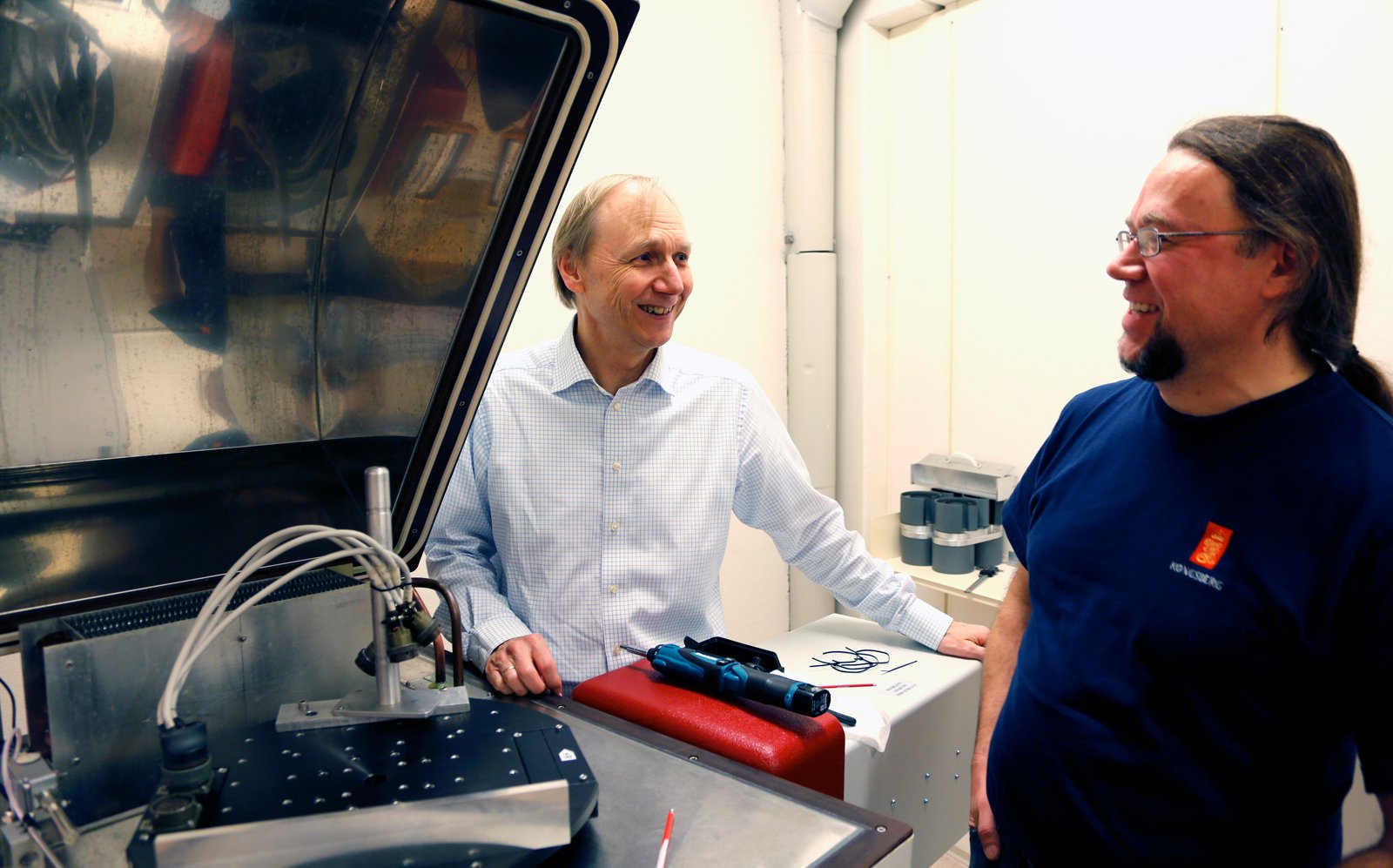
Motion Reference Unit
If you ever need to position something large and heavy on the seabed in poor weather conditions, you will need a Motion Reference Unit – or so-called MRU.
-
Text:TORBJØRN EKELUND
-
Ove Ronny HaraldsenGroup Communication Manager
Kongsberg Seatex has already been manufacturing MRUs for 20 years. The most recent version has been named MRU 5+ and is around the same size as a normal propane canister you would use on a camping trip. However, you wouldn’t use this to burn your sausages.
“An MRU is used to measure the motion of a vessel,” explains Finn Otto Sanne, Product Director for Attitude Determination Systems at Kongsberg Seatex.
“An MRU can measure a vessel’s motion in three different directions. These are known as roll, pitch and heave.”

“Roll, pitch and heave?”
“Yes, that’s right. Roll is how the boat tilts, the way it moves from side to side. Pitch is when the bow moves up and down. And heave is when the entire vessel moves up and down in a vertical motion.”
“And an MRU is a sensor which can predict these motions?”
“No, it can’t predict the motions, but it can provide us with an accurate real-time description of how the vessel moves. This can be very important information in a number of situations, if for example a vessel has to position a large, heavy object on the seabed. Normally, the object will be suspended on a wire from the tip of a crane. But when the load is lowered and gets close to the seabed, it will move up and down with the vessel. This is obviously not a good thing and you run the risk of damaging the object as it hits the seabed.”
“So how do you solve the problem?”
“The wire used to hold the load goes round a winch. If you operate the winch correctly - up when the vessel moves downwards and down when the vessel moves upwards - you can counteract the motion of the vessel. But such operation of a winch requires extremely accurate measurements.”
“And you get these measurements from the MRU?”
“That’s right. That maybe also explains how important it is to have this information in real time. The information has to be immediate.”

“Where is the MRU installed on a boat?”
“Loads are normally lowered over the ship side and are suspended from the tip of the crane, and you can’t install an MRU there. Instead, it’s installed inside the vessel, in a more central position. When the boat rolls, the tip of the crane will move up and down. The job of the MRU is to calculate roll and pitch, then calculate the resulting heave. And not from the position of the MRU itself, but out on the tip of the crane.”
“Yes, because the MRU is actually positioned in the part of the boat where there is least motion?”
“Yes, It’s quite a challenge to measure motion when the sensor is not physically located on the crane tip. We need to know the distance from the MRU to the tip of the crane. Once we have this, the system can calculate the rest.”
“Are there other scenarios where an MRU is essential?”
“People who chart the seabed often use MRUs, mostly for the same reasons I have just described. The water surface is hardly ever flat, so the boat will always be heaving, up and down, and the echosounder will therefore describe the seabed in a wave shape, if you cannot compensate for the motion of the boat.”
“Our last question is, what’s inside that small canister?”
“There are two components. One is an accelerometer which measures acceleration in one direction, for example for heave, vertically up and down. The other component is known as the gyro and is an angle gauge or protractor. Both are absolutely essential to produce an accurate result. There are three of each component in an MRU, one for each direction of motion - forwards, backwards, sideways and vertically.”